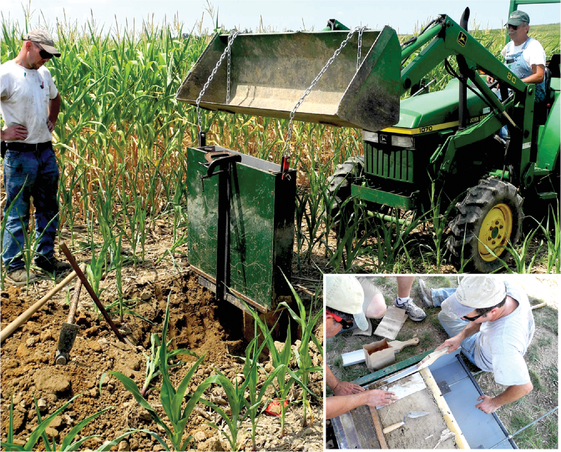A New Nitrate Testing Protocol for Manure Injection

Increasingly, farmers are injecting manure into fields. While the fertilization technique conserves ammonia nitrogen (N), it results in distinct subsurface N bands. Consequently, random soil sampling in these fields could result in samples disproportionately high (near bands) or low (away from bands) in nutrients. Protocols are needed to increase confidence in soil test results.
Researchers tackled this problem by using a unique monolith sampling technique to develop sampling recommendations. At pre-sidedress nitrate test time in corn, the researchers collected large soil blocks oriented perpendicular to manure injection bands; removed 30-cm-deep, side-by-side soil cores from those monoliths; and analyzed the cores for nitrate N concentration. They then ran and compared Monte Carlo simulations based on several proposed sampling protocols. Models with equidistant collection points performed better than those with randomly selected points. The best-performing protocol called for five 30-cm-deep soil cores spaced 15 cm apart and oriented in a line perpendicular to the injected bands. Done at four locations in the field, the approach produces a composite of 20 samples. There was no need to identify the exact band location.
This protocol can reduce sampling error for soil nitrate testing and help promote adoption of manure injection.
Adapted from Meinen, R.J., Beegle, D.B., Vishwanath, S., Kleinman, P.J.A., Saporito, L.S., Spargo, J., Karsten, H., & Dillon, J. (2022). Monolith soil core sampling to develop nitrate testing protocol for manure injection. Soil Science Society of America Journal, 87, 378–389. https://doi.org/10.1002/saj2.20509
Text © . The authors. CC BY-NC-ND 4.0. Except where otherwise noted, images are subject to copyright. Any reuse without express permission from the copyright owner is prohibited.











